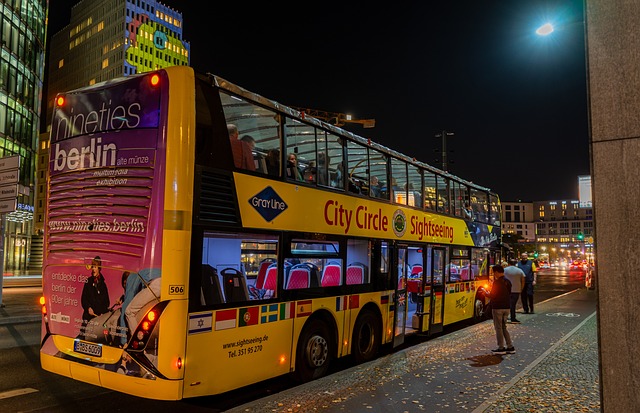The Tech-Savvy Tour Guide: Integrating Digital Tools for Enhanced Experiences
In an ever-evolving world shaped by rapid technological advancements, the tourism industry is experiencing a significant metamorphosis. The role of a tour guide, traditionally grounded in interpersonal communication and storytelling, is now being augmented by an array of digital tools that aim to enhance the visitor experience. In this article, we will explore how tech-savvy tour guides are integrating digital technologies to create engaging, informative, and seamless travel experiences. We will delve into various tools and innovative practices that elevate the standards of tour guiding, making the profession not only more efficient but also more enjoyable for both guides and travelers.
The Shift in Tourism Dynamics
The global tourism landscape has undergone substantial changes in recent years. With the advent of smartphones and mobile applications, travelers now have access to vast amounts of information at their fingertips. From user-generated content such as reviews and recommendations to virtual maps and itinerary planners, tourists are more empowered than ever before. As a result, the role of the tour guide is evolving. Instead of being the sole source of information, today’s guides must act as facilitators of knowledge, curators of experiences, and connectors of stories.
From Information Providers to Experience Curators
Historically, tour guides were primarily tasked with providing factual information about landmarks, history, and culture. However, the rise of digital tools allows them to expand their role, focusing more on curating unique experiences tailored to individual preferences. This shift requires a new skill set that combines traditional guiding principles with technical savviness.
Digital Tools Elevating the Tour Guide Experience
The integration of technology into tour guiding is not just a passing trend; it’s a pivotal aspect of modern tourism that enhances the overall experience for visitors while streamlining guide operations. Below, we explore some of the most influential digital tools that tech-savvy tour guides are using to transform their services.
Mobile Applications and Platforms
With smartphones now ubiquitous, mobile applications have become invaluable in the world of tourism. Many tour guides leverage platforms such as:
- Tour Buddy: A user-friendly app that allows tourists to discover guided tours and activities in real time, providing options that suit their locations and interests.
- Meetup: Enables tourists to find local experiences and join groups, enhancing the social aspect of traveling.
- Google Maps: Guides use this tool for navigation and to share personalized routes with tourists, ensuring that hidden gems aren’t missed.
These applications allow guides to create custom itineraries that employees can update in real-time based on tourists’ interests, ensuring a tailored experience.
Virtual Reality (VR) and Augmented Reality (AR)
Virtual Reality and Augmented Reality technologies are among the most exciting advancements in tourism. They offer immersive experiences that can enrich any guided tour significantly. For instance, a guide leading a historical tour could use VR to transport tourists to significant past events, allowing them to witness history come alive, making it more tangible and impactful.
Augmented Reality apps can overlay additional information on the physical environment through the visitor’s smartphone or AR glasses. By simply pointing their device at a landmark, tourists can access historical context, fun facts, and multimedia presentations, enriching their understanding and interaction with the site.
Social Media Integration
In today’s socially connected world, social media platforms play a vital role in how travelers share their experiences. Tech-savvy tour guides can harness platforms like Instagram, Facebook, and Twitter to showcase their tours, gather feedback, and foster community engagement. Exciting content such as live broadcasting, behind-the-scenes looks, and travel tips can enhance their visibility and attract new clients, all while enhancing the experience for their current groups through social sharing.
Online Booking and Management Tools
Streamlining operations is crucial for any tour guide business, and numerous online booking management tools help achieve this goal. Tools like:
- FareHarbor: A comprehensive booking system that manages reservations and payments seamlessly.
- Vagaro: Useful for managing multiple tours, scheduling, and communicating with clients.
These systems free up valuable time for tour guides, enabling them to focus on their guiding duties rather than the logistics of booking management. Additionally, many of these platforms allow tour guides to upload their digital marketing materials, ensuring potential travelers can easily access and pique their interest in their tours.
Building Better Communication with Tourists
Effective communication is vital in delivering memorable experiences. Digital tools also facilitate improved communication between tour guides and travelers. By utilizing:
- Messaging Apps: Tools like WhatsApp, Facebook Messenger, and even SMS can keep travelers informed about schedules, meeting points, and any changes on the fly.
- Email Newsletters: Regular updates or newsletters can help keep tourists engaged with their upcoming tours, offering sneak peeks and useful information.
These communication channels foster relationships and engagement, allowing tourists to feel more connected to the tour guides and the experiences they offer.
Advantages of Being a Tech-Savvy Tour Guide
Incorporating digital tools into the tour guide repertoire not only enhances the experience for tourists but also brings numerous benefits for the guides themselves. Some of the primary advantages include:
- Increased Efficiency: Digital tools streamline many aspects of the tour guiding process, from booking to tour delivery, allowing guides to manage their time better.
- Enhanced Engagement: The use of technology enables guides to present information in diverse formats, capturing the attention of different types of learners.
- Greater Reach: Social media and online marketing strategies allow guides to reach a broader audience, attracting international tourists who might not have discovered them otherwise.
- New Revenue Streams: Tech-savvy guides can offer premium services, including virtual tours or add-ons, leading to increased earnings.
Challenges and Solutions in Adopting Technology
While the benefits are substantial, transitioning to a more digitized approach is not without its challenges. Some guides may face technical difficulties, skepticism from traditionalists, or a lack of resources to invest in necessary tools.
To tackle these challenges, aspiring tech-savvy guides should consider the following:
- Continual Learning: Engaging with online courses or tutorials on new technologies ensures guides stay updated with the latest trends and tools.
- Fostering a Community: Networking with fellow guides can provide support, share insights, and encourage experimentation with digital tools.
- Investing Wisely: Tour guides should start small, utilizing free tools before investing in more comprehensive systems as they grow comfortable with tech integration.
Looking Ahead: The Future of Tour Guiding
The future of touring is undoubtedly intertwined with technological advancements. As augmented and virtual realities become increasingly accessible and as artificial intelligence and machine learning evolve, the scope of experiences available to travelers is expanding rapidly.
Guides will find themselves at the forefront of curating these tech-enriched experiences, learning not only how to adapt but also how to innovate, allowing their creative storytelling to flourish in uninterrupted, imaginative capacities. The possibilities for the development of fully immersive experiences are vast—tourists may one day stroll through historical landmarks while receiving real-time feedback about their surroundings through wearable devices, or even participate in virtual explorations of cultural heritage sites from around the globe.
Conclusion
The role of the tour guide is undergoing a transformative evolution, driven by the integration of digital tools that enhance the visitor experience. Tour guides who embrace technology will not only provide more engaging and informative journeys but also elevate their professional standing in a competitive market. By adapting to these changes and equipping themselves with the skills for the digital age, guides can ensure that they remain vital contributors to the enriching world of travel and tourism for generations to come.


